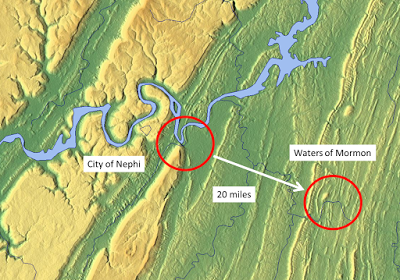Lesson 20: My Soul Is Pained No More
Alma relates the story of the people of Limhi. Then Limhi and all his people desired baptism. The text doesn’t say where this took places except “into the water,” but I infer the people were baptized in the river, much as the early LDS were baptized in the Mississippi River.
I also think it’s interesting that Mosiah 25:23 says “there were seven churches in the land of Zarahemla.” We can’t tell if a “church” in this sense was like a stake or a ward, but here is the description:
This leads me to conclude that the term “church” refers to a “congregation” or “assembly.” A congregation would be more like a ward than a stake, IMO. This means the population of Zarahemla may not have been as great as is sometimes proposed. True, there were nonbelievers as well, and for all we know, there were many more nonbelievers than believers. I mention this to suggest that maybe these Nephite cities were not all that large–at least not as large as we often think.
This reminds me of small branches of the Church I’ve visited throughout the world. No matter how small the congregation, the principles of the Gospel apply equally.
“For where two or three are gathered together in my name, there am I in the midst of them.” Matthew 18:20.
Source: 2016 Gospel Doctrine Resource


